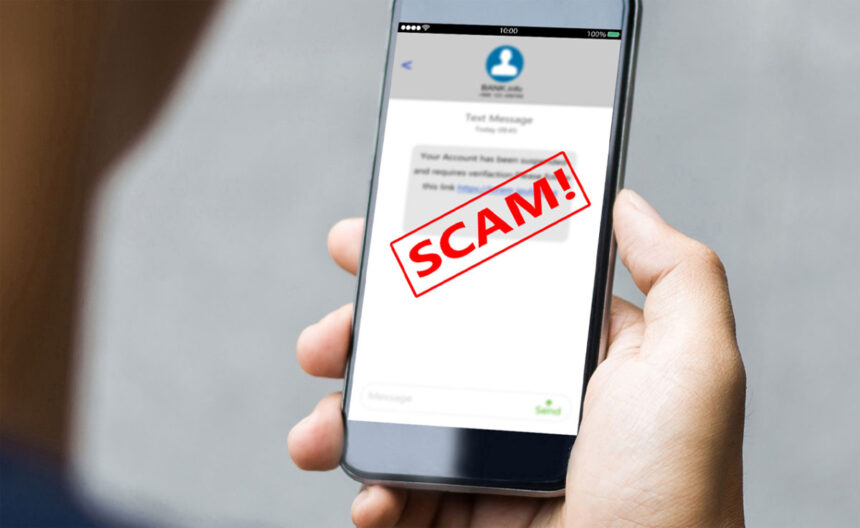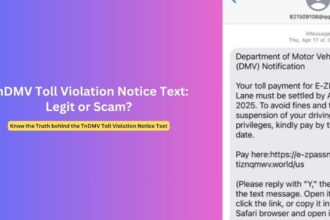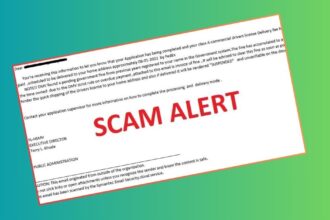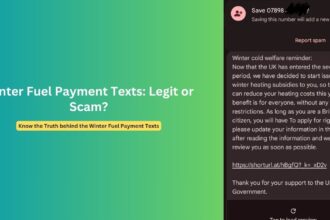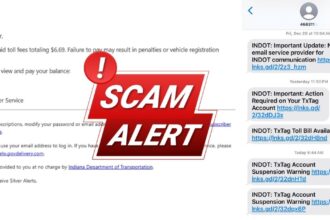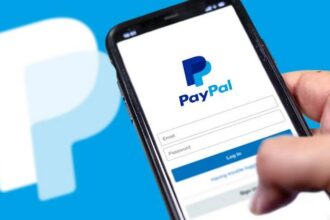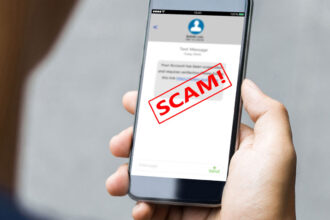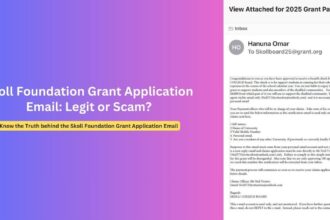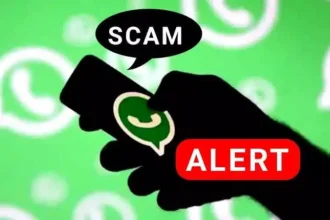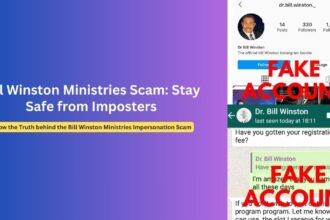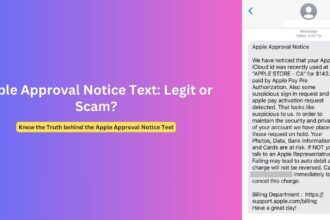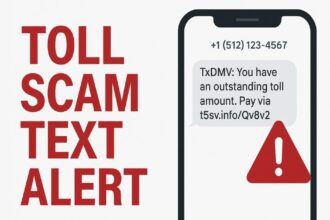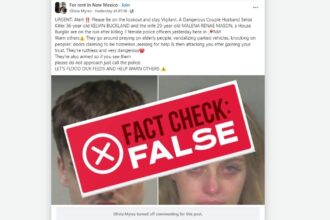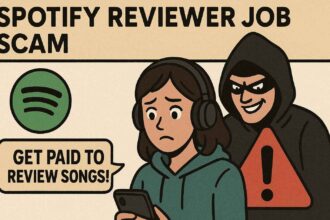“Your BSTI loan approval is confirmed. Funds ready for deposit tomorrow. Reply to confirm account details.” This message—or something eerily similar—is appearing on thousands of Americans’ phones nationwide, often targeting people who never applied for such loans. The proliferation of these BSTI loan text messages is part of a larger trend of financial scams that cost Americans over $10 billion in 2024 alone, according to the Federal Trade Commission.
This in-depth report examines the increasingly common BSTI loan text message scam, breaks down how these fraudulent operations work, and provides actionable strategies to protect yourself and your financial information.
The Growing Epidemic of BSTI Loan Text Message Scams
Text message scams (also known as “smishing”) have exploded in recent years, with an estimated 87.8 billion fraudulent texts sent to Americans in 2024. Among these, loan-related scams using company names like BSTI have become particularly prevalent. Similar to other text scams that impersonate legitimate businesses, these messages prey on financial hopes and anxieties.
“We’re seeing a significant increase in loan-related text scams that use official-sounding company names like BSTI,” explains Robert Thompson, Director of the Digital Fraud Prevention Alliance. “These scammers are becoming increasingly sophisticated, using psychological triggers and creating false urgency to bypass people’s natural skepticism.”
The Federal Communications Commission (FCC) has recently prioritized combating these scams, issuing direct orders to service providers to shut down operations marketing fraudulent lending services. In a recent enforcement action, the FCC specifically required a voice service provider to “cease illegal robocall campaigns marketing lending services”—highlighting how widespread these loan-related scams have become.
How the BSTI Loan Text Message Scam Operates
The BSTI loan text message scam follows a calculated, multi-stage approach designed to extract personal information, money, or both from unsuspecting victims:
1. Initial Contact Phase
The scam begins with an unsolicited text message that appears to come from “BSTI Loans” or “BSTI Financial Services.” These messages typically state that a loan has been pre-approved or is ready for funding, creating an immediate impression of good news and financial opportunity.
2. Manufactured Legitimacy
To establish credibility, scammers often include:
- Professional-sounding financial terminology
- Specific loan amounts (typically between $5,000-$25,000)
- References to “pre-approval” or “guaranteed approval”
- Official-looking logos or branding elements in follow-up communications
3. Creating a Sense of Urgency
A hallmark of the BSTI scam is the artificial time pressure. Messages often claim that funds are “ready for tomorrow” or that the approval will “expire within 24 hours” if not confirmed immediately. This urgency tactic prevents victims from taking time to verify legitimacy.
4. Information Harvesting
If a recipient responds to the initial message, scammers begin requesting increasingly sensitive information, claiming it’s needed to “verify identity” or “complete the loan process.” This might start with basic details like name and address but quickly escalates to Social Security numbers, banking information, and other valuable personal data.
5. Financial Extraction
In the final phase, many victims are asked to pay upfront fees disguised as:
- “Loan insurance premiums”
- “Processing fees”
- “Tax prepayments”
- “Security deposits”
According to consumer reports, these fees typically range from $50 to $500, with scammers promising these amounts will be “refunded” or “included in the loan disbursement.”
“Once they receive these payments, the scammers typically vanish, and the promised loan never materializes,” notes FBI Cybercrime Unit spokesperson Elena Rodriguez. “And because many of these payments are requested through difficult-to-trace methods like gift cards or wire transfers, victims rarely recover their money.”
Common Text Patterns and Language Used in BSTI Scams
BSTI loan scam messages follow recognizable patterns. Being familiar with these templates can help you quickly identify potential scams:
Standard Opening Messages:
- “BSTI Loans: Your loan application #12345 is APPROVED for $15,000. Funds ready for deposit tomorrow. Reply YES to confirm.”
- “BSTI Financial: CONGRATULATIONS! Your loan is pre-qualified for $10,000. Respond within 24 hours to secure funding.”
- “URGENT: Your BSTI loan funding ($7,500) is pending confirmation. Call [phone number] immediately to avoid cancellation.”
- “BSTI Lending Partners: You’ve been SELECTED for special financing of $20,000 at 5.9%. Link expires today: [malicious URL]”
Follow-Up Messages:
If recipients respond to the initial text, follow-up messages typically escalate the scam:
- “To release your BSTI loan funds, we need to verify your identity. Please provide your Social Security number and date of birth.”
- “Your $12,000 BSTI loan requires a one-time processing fee of $199. Once received, funds will be deposited within 24 hours.”
- “For security purposes, please confirm your banking details at [suspicious link] to receive your approved BSTI loan.”
Many BSTI scam texts also incorporate reference numbers, partial account details, or location information to appear more legitimate. The FCC notes that scammers increasingly use “neighbor spoofing,” where texts come from numbers that resemble your own area code to increase trust.
Red Flags That Signal a Fraudulent BSTI Text Message
Several warning signs can help you identify BSTI loan text message scams:
1. Unsolicited Offers
- You receive a text about a loan you never applied for
- The message comes from a company you’ve never heard of or done business with
- The text arrives at unusual hours (late night or very early morning)
2. Message Content Issues
- Misspellings, grammatical errors, or unusual formatting
- Generic greetings instead of your actual name
- Overly enthusiastic language with excessive capitalization or exclamation marks
- Suspiciously low interest rates or “guaranteed” approval regardless of credit history
3. Suspicious Contact Methods
- Links with shortened URLs (bit.ly, tinyurl, etc.)
- Phone numbers with area codes from different states or foreign countries
- Instructions to communicate only via text (legitimate lenders offer multiple contact options)
- Email addresses with generic domains or slight misspellings of known companies
4. Problematic Requests
- Demands for payment before receiving loan funds
- Requests for payment via gift cards, cryptocurrency, wire transfers, or money apps
- Pressure to provide sensitive information via text or unsecured websites
- Refusal to provide written documentation of loan terms
“Legitimate financial institutions have established secure channels for loan applications and approvals,” explains Jennifer Washington, a consumer protection attorney. “They don’t initiate loan offers via text message, they don’t pressure you for immediate responses, and they certainly don’t ask for payments before disbursing funds.”
Comprehensive Protection Strategies Against Loan Text Scams
Protecting yourself from BSTI and similar loan scams requires both immediate responses to suspicious texts and long-term preventive measures:
When You Receive a Suspicious Text:
- Don’t Engage With the Sender
- Never reply directly to suspicious text messages
- Don’t click on any links contained in the message
- Don’t call phone numbers provided in the text
- Even replying “STOP” to illegitimate scammers can confirm your number is active (though this is appropriate for legitimate marketers)
- Report the Message
- Forward suspicious texts to 7726 (SPAM) to alert your mobile carrier
- File a complaint with the FCC at fcc.gov/complaints
- Report to the Federal Trade Commission at ReportFraud.ftc.gov
- Document Everything
- Take screenshots of suspicious messages
- Note the phone number and exact time of receipt
- Save any evidence if you’ve already engaged with scammers
- Verify Independently
- If you’re genuinely expecting loan communication, contact the lender directly through their official website or verified phone number
- Never use contact information provided in the suspicious message itself
Preventive Measures for Long-Term Protection:
- Strengthen Your Device Security
- Enable spam filtering on your mobile device
- Consider installing a reputable call/text blocking app
- Keep your phone’s operating system updated
- Utilize Carrier Protection Services Each major carrier offers spam protection: Carrier Protection Service Features AT&T ActiveArmor Spam call blocking, fraud warnings T-Mobile ScamShield Scam call identification, blocking Verizon Call Filter Spam detection, risk assessment US Cellular Call Guardian Spam identification, blocking
- Register with Do Not Call Protections
- Add your number to the National Do Not Call Registry (donotcall.gov)
- Check if your state has additional do-not-call protections
- Monitor Your Credit
- Set up free credit monitoring services
- Consider a credit freeze if you suspect your information has been compromised
- Review credit reports regularly for unauthorized inquiries or new accounts
- Practice Data Minimization
- Limit sharing your phone number online
- Review privacy policies before providing contact information
- Opt out of data sharing whenever possible with financial institutions
“The best protection is awareness and skepticism,” advises former FTC investigator Marcus Diaz. “If you didn’t actively apply for a loan with a company, any text claiming your loan is approved should be treated as suspicious by default.”
What To Do If You’ve Already Responded
If you’ve already engaged with a suspected BSTI loan scam text, take these immediate steps:
- Cut Off Communication: Stop responding to any further messages immediately.
- Protect Your Accounts: Change passwords for any financial accounts, especially if you shared account information.
- Contact Financial Institutions: Alert your bank and credit card companies to watch for fraudulent activity.
- Place a Fraud Alert: Contact one of the three major credit bureaus to place a fraud alert on your credit report:
- Experian: 1-888-397-3742
- TransUnion: 1-800-680-7289
- Equifax: 1-888-766-0008
- File Official Reports:
- Local police department
- FBI’s Internet Crime Complaint Center (IC3.gov)
- Consumer Financial Protection Bureau (consumerfinance.gov/complaint)
Frequently Asked Questions
1. Is BSTI a legitimate lending company?
While there may be legitimate financial companies with similar names or acronyms, the BSTI sending unsolicited loan approval texts is typically not legitimate. Genuine lending companies don’t initiate relationships through unsolicited text messages offering pre-approved loans. Always verify a lender’s legitimacy through the Nationwide Multistate Licensing System (NMLS) or your state’s financial regulatory agency.
2. What if I recently applied for loans and think this might be legitimate?
If you’ve recently applied for loans, still exercise caution with text messages. Legitimate lenders typically communicate through their secure portals, official emails, or direct mail—not unsolicited texts. Contact the lender directly through their official website or verified phone number (not the number in the text) to confirm any communications.
3. How can I verify if a loan offer is legitimate?
Legitimate loan offers will:
- Come after you’ve initiated an application
- Include specific information about the loan terms
- Never require upfront fees before receiving funds
- Provide formal documentation of loan terms
- Come from verifiable, licensed financial institutions
- Use secure communication channels
- Never pressure you for immediate decisions
4. Can scammers access my bank account if I only clicked a link but didn’t enter information?
Simply clicking a link may not give scammers direct access to your accounts, but it could expose your device to malware that captures information later. If you clicked a link in a suspicious text:
- Run anti-malware software immediately
- Monitor your accounts for unusual activity
- Consider changing passwords for financial accounts
- Watch for signs of identity theft in the coming months
5. How do scammers get my phone number for these loan texts?
Scammers obtain phone numbers through various methods:
- Data breaches and leaked information
- Public records and directories
- Social media profiles
- Purchasing lists of contacts from third parties
- Random number generation (sending to thousands of numbers hoping some respond)
- Information shared on applications and websites that sell data
Conclusion: Vigilance in an Era of Digital Deception
The BSTI loan text message scam represents just one variant in the rapidly evolving landscape of financial fraud. As consumers increasingly manage their finances through mobile devices, scammers have adapted their tactics to exploit our reliance on digital communication.
Protecting yourself requires a combination of skepticism toward unsolicited offers, awareness of common scam patterns, and proactive security measures. Remember that legitimate financial institutions have established secure processes for loan applications and approvals—processes that don’t begin with unexpected text messages.
By understanding how these scams operate and implementing the protection strategies outlined in this article, you can significantly reduce your risk of falling victim to BSTI and similar loan text scams. When in doubt, the safest approach is to disengage, verify independently, and report suspicious activities to the appropriate authorities.
The fight against text message scams requires both individual vigilance and collective action through reporting. Each report helps authorities identify patterns, track scammers, and develop better protections for all consumers.
This article is for informational purposes only and does not constitute legal or financial advice. If you believe you’ve been a victim of fraud, consult with appropriate professionals and report to relevant authorities.
